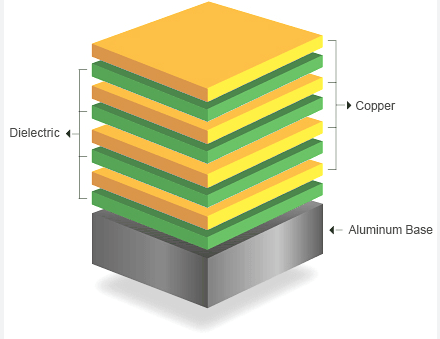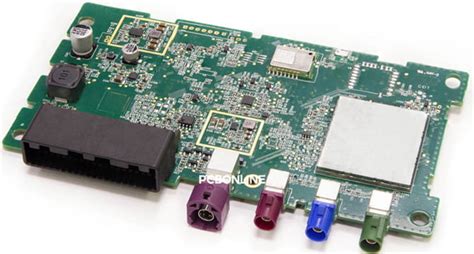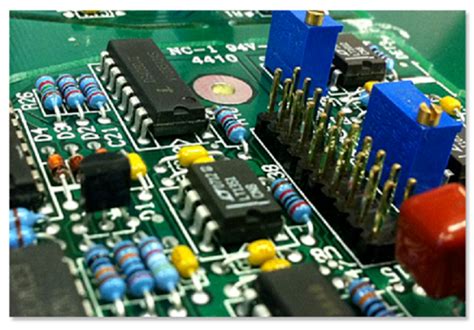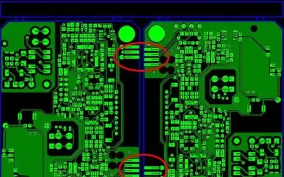Pcb connector
Innovations In PCB Board Manufacturing Machines
Printed Circuit Board (PCB) manufacturing has undergone significant advancements over the years, driven by the relentless pursuit of efficiency, precision, and scalability. Innovations in PCB board manufacturing machines have played a pivotal role in transforming the industry, enabling the production of increasingly complex and miniaturized electronic devices. These advancements are not only enhancing the capabilities of manufacturers but also meeting the growing demands of various sectors, including consumer electronics, automotive, aerospace, and telecommunications.
One of the most notable innovations in PCB board manufacturing machines is the development of high-precision drilling and routing equipment.
Traditional mechanical drilling methods have been largely supplanted by laser drilling technology, which offers unparalleled accuracy and speed. Laser drilling machines can create microvias with diameters as small as 20 micrometers, a feat that is essential for the production of high-density interconnect (HDI) PCBs. This technology not only improves the quality of the boards but also reduces material wastage and operational costs.
In addition to drilling, advancements in solder paste printing machines have significantly improved the assembly process.
Modern solder paste printers utilize advanced vision systems and automated alignment features to ensure precise deposition of solder paste on the PCB pads. This precision is crucial for the reliable attachment of surface-mount components, especially as the industry moves towards smaller and more densely packed components. Furthermore, the integration of real-time monitoring and feedback systems in these machines allows for immediate correction of any deviations, thereby enhancing the overall yield and reliability of the manufacturing process.
Another critical area of innovation is in the realm of pick-and-place machines.
These machines are responsible for placing electronic components onto the PCB with high speed and accuracy. Recent advancements have led to the development of pick-and-place machines equipped with multiple heads and advanced vision systems, capable of handling components of various sizes and shapes with remarkable precision. The incorporation of artificial intelligence and machine learning algorithms has further optimized the placement process, enabling these machines to adapt to different production requirements and improve throughput.
Moreover, the advent of automated optical inspection (AOI) machines has revolutionized the quality control aspect of PCB manufacturing.
AOI machines use high-resolution cameras and sophisticated image processing algorithms to inspect PCBs for defects such as solder bridges, missing components, and misalignments. The ability to perform rapid and accurate inspections ensures that any defects are identified and rectified early in the production process, thereby reducing the likelihood of costly rework and improving the overall quality of the final product.
The integration of Industry 4.0 principles into PCB board manufacturing machines has also brought about significant improvements.
The use of interconnected machines, real-time data analytics, and predictive maintenance has enabled manufacturers to achieve higher levels of efficiency and productivity. For instance, smart manufacturing systems can predict potential equipment failures and schedule maintenance activities proactively, minimizing downtime and ensuring continuous production.
In conclusion, the innovations in PCB board manufacturing machines have been instrumental in advancing the capabilities of the electronics manufacturing industry. From high-precision drilling and solder paste printing to advanced pick-and-place and AOI machines, these technological advancements have enhanced the efficiency, accuracy, and reliability of the PCB manufacturing process. As the demand for more sophisticated electronic devices continues to grow, ongoing innovations in manufacturing equipment will undoubtedly play a crucial role in meeting these challenges and driving the industry forward.
Benefits Of Automated PCB Board Manufacturing
Automated PCB board manufacturing has revolutionized the electronics industry, offering a multitude of benefits that enhance efficiency, precision, and overall production quality. One of the primary advantages of automation in PCB manufacturing is the significant reduction in human error. Manual processes are inherently prone to mistakes, which can lead to defective products and increased costs. By automating these processes, manufacturers can ensure a higher level of consistency and accuracy, thereby minimizing the likelihood of errors and defects.
In addition to reducing errors, automated PCB manufacturing machines significantly increase production speed.
Traditional manual methods are time-consuming and labor-intensive, often leading to bottlenecks in the production line. Automation streamlines these processes, allowing for faster turnaround times and the ability to meet tight deadlines. This increased efficiency not only boosts productivity but also enables manufacturers to respond more swiftly to market demands and customer needs.
Moreover, automated PCB manufacturing enhances precision and repeatability.
Advanced machines are equipped with sophisticated software and sensors that ensure each PCB is produced to exact specifications. This level of precision is particularly crucial in industries where even the smallest deviation can lead to significant issues, such as in aerospace, medical devices, and telecommunications. The repeatability of automated processes ensures that each PCB produced is identical to the last, maintaining a high standard of quality across large production runs.
Another notable benefit of automated PCB manufacturing is cost-effectiveness.
While the initial investment in automated machinery can be substantial, the long-term savings are considerable. Automation reduces the need for manual labor, which can be costly and subject to variability in performance. Additionally, the reduction in errors and defects means fewer resources are wasted on rework and scrap, further driving down costs. Over time, these savings can offset the initial investment, making automation a financially sound decision for many manufacturers.
Furthermore, automated PCB manufacturing machines offer enhanced flexibility and scalability.
Modern machines can be easily programmed and reconfigured to accommodate different designs and production volumes. This flexibility allows manufacturers to quickly adapt to changing customer requirements and market trends without significant downtime or additional costs. Scalability is also a key advantage, as automated systems can effortlessly scale up production to meet increased demand or scale down during slower periods, optimizing resource utilization.
Environmental sustainability is another important benefit of automated PCB manufacturing.
Automated processes are typically more efficient in their use of materials and energy, leading to reduced waste and lower environmental impact. Additionally, many modern machines are designed with energy-saving features and are capable of recycling materials, further contributing to sustainability efforts. As environmental concerns continue to grow, the ability to produce PCBs in a more eco-friendly manner is becoming increasingly important for manufacturers.
In conclusion, the benefits of automated PCB board manufacturing are manifold, encompassing improved accuracy, increased production speed, cost savings, enhanced flexibility, and environmental sustainability. By reducing human error and ensuring consistent quality, automation has become an indispensable tool in the electronics industry. As technology continues to advance, the capabilities of automated PCB manufacturing machines will only expand, offering even greater advantages and solidifying their role as a cornerstone of modern manufacturing processes.
Key Features To Look For In PCB Manufacturing Equipment
When selecting PCB manufacturing equipment, it is crucial to consider several key features that can significantly impact the efficiency, quality, and cost-effectiveness of the production process. One of the primary aspects to evaluate is the precision and accuracy of the machine. High-precision equipment ensures that the intricate patterns and connections on the PCB are created with exactitude, which is essential for the functionality and reliability of the final product. Advanced machines often come with sophisticated control systems and sensors that monitor and adjust the manufacturing process in real-time, thereby minimizing errors and enhancing overall quality.
Another important feature to consider is the speed and throughput of the equipment.
In a competitive market, the ability to produce PCBs quickly without compromising on quality can provide a significant advantage. High-speed machines are designed to handle large volumes of production efficiently, which is particularly beneficial for companies looking to scale up their operations. However, it is essential to balance speed with precision, as overly rapid production can sometimes lead to defects or inconsistencies in the PCBs.
The versatility and flexibility of the PCB manufacturing machine are also critical factors.
Modern PCB designs can vary widely in terms of complexity, size, and material requirements. Therefore, equipment that can accommodate a diverse range of specifications is highly valuable. Machines that offer adjustable settings and interchangeable components can adapt to different production needs, making them a more cost-effective investment in the long run. Additionally, the ability to handle various types of materials, such as different substrates and conductive inks, can expand the range of products that a manufacturer can offer.
Automation and integration capabilities are increasingly important in PCB manufacturing.
Automated machines reduce the need for manual intervention, which not only speeds up the production process but also reduces the likelihood of human error. Integration with other systems, such as computer-aided design (CAD) software and enterprise resource planning (ERP) systems, can streamline the workflow and improve overall efficiency. For instance, machines that can directly import design files from CAD software can eliminate the need for manual data entry, thereby reducing the risk of errors and saving time.
Maintenance and ease of use are additional considerations that should not be overlooked.
Equipment that is easy to maintain and operate can reduce downtime and increase productivity. User-friendly interfaces and comprehensive training programs can help operators quickly become proficient with the machinery, further enhancing efficiency. Moreover, machines that come with robust customer support and readily available spare parts can minimize disruptions in the production process.
Energy efficiency and environmental impact are also becoming increasingly important in the selection of PCB manufacturing equipment.
Machines that consume less energy and produce fewer emissions can help companies meet regulatory requirements and reduce their operational costs. Additionally, environmentally friendly equipment can enhance a company’s reputation and appeal to environmentally conscious customers.
In conclusion, when choosing PCB manufacturing equipment, it is essential to consider a range of features that can influence the quality, efficiency, and cost-effectiveness of the production process. Precision, speed, versatility, automation, ease of maintenance, and environmental impact are all critical factors that can determine the success of a PCB manufacturing operation. By carefully evaluating these features, manufacturers can select equipment that meets their specific needs and supports their long-term business goals.
The Future Of PCB Board Manufacturing Technology
The future of PCB board manufacturing technology is poised for significant advancements, driven by the relentless pursuit of efficiency, precision, and innovation. As the backbone of modern electronic devices, printed circuit boards (PCBs) are integral to the functionality of everything from smartphones to industrial machinery. Consequently, the evolution of PCB manufacturing machines is a critical area of focus for the electronics industry.
One of the most notable trends in PCB board manufacturing technology is the increasing automation of production processes.
Automation not only enhances the speed and accuracy of PCB fabrication but also reduces the likelihood of human error. Advanced robotic systems and automated guided vehicles (AGVs) are being integrated into manufacturing lines, enabling seamless material handling and assembly. This shift towards automation is further complemented by the implementation of artificial intelligence (AI) and machine learning algorithms, which optimize production workflows and predict potential issues before they arise.
In addition to automation, the miniaturization of electronic components is driving the need for more sophisticated PCB manufacturing machines.
As devices become smaller and more powerful, the demand for high-density interconnect (HDI) PCBs has surged. These PCBs require precise drilling and placement of microvias, which are tiny holes that connect different layers of the board. Laser drilling machines, capable of creating microvias with exceptional accuracy, are becoming increasingly prevalent in the industry. Moreover, advancements in photolithography techniques are enabling the production of finer circuit patterns, further enhancing the performance and reliability of PCBs.
Another significant development in PCB board manufacturing technology is the adoption of additive manufacturing, commonly known as 3D printing.
This innovative approach allows for the creation of complex PCB structures that were previously unattainable with traditional subtractive methods. By building up layers of conductive and insulating materials, 3D printing offers greater design flexibility and the potential for rapid prototyping. This technology is particularly beneficial for producing customized PCBs in small quantities, catering to niche markets and specialized applications.
Sustainability is also becoming a key consideration in the future of PCB manufacturing.
The industry is increasingly focused on reducing its environmental footprint by minimizing waste and energy consumption. Eco-friendly materials, such as biodegradable substrates and lead-free solder, are being incorporated into PCB production. Additionally, advancements in recycling technologies are enabling the recovery and reuse of valuable metals from discarded PCBs, contributing to a more circular economy.
The integration of the Internet of Things (IoT) and Industry 4.0 principles is further transforming PCB manufacturing.
Smart factories equipped with interconnected machines and sensors are capable of real-time monitoring and data analysis. This connectivity allows for predictive maintenance, ensuring that equipment operates at peak efficiency and reducing downtime. Furthermore, digital twins—virtual replicas of physical manufacturing systems—are being used to simulate and optimize production processes, leading to improved quality control and reduced costs.
In conclusion, the future of PCB board manufacturing technology is characterized by a convergence of automation, miniaturization, additive manufacturing, sustainability, and digital integration. These advancements are not only enhancing the efficiency and precision of PCB production but also paving the way for new possibilities in electronic design and functionality. As the demand for sophisticated electronic devices continues to grow, the evolution of PCB manufacturing machines will remain a critical driver of innovation in the electronics industry.





